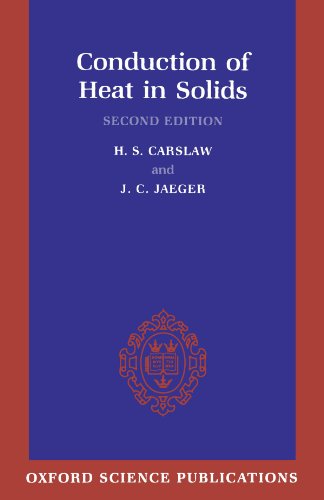Conduction of Heat in Solids download
Par gross william le dimanche, janvier 10 2016, 22:22 - Lien permanent
Conduction of Heat in Solids by H. S. Carslaw, J. C. Jaeger


Conduction of Heat in Solids H. S. Carslaw, J. C. Jaeger ebook
ISBN: 0198533683, 9780198533689
Format: djvu
Publisher: Oxford University Press, USA
Page: 517
Horatio Scott CarslawとJohn Conrad Jaegerによる共著 Conduction of Heat in Solids. An object with low conductivity will transfer heat slower than an object with high conductivity. Gases, such as air, do not conduct heat very well. All solids (metals and non-metals) are made up of tiny particles called atoms, or groups of atoms called molecules. This is why some substances are used as insulators while others are used in applications such as cooking. Conduction can simply be thought of as heat transfer by “touch”, and only can occur in matter (solids, liquids and gases). Conduction is heat transfer from warm to cooler areas within a material, or between two materials touching each other. UNIT II CONVECTIVE HEAT TRANSFER 10. The greatest flow of heat possible between materials is where there is a direct conduction between solids. Well, in fact there are two mechanisms of heat conduction. An example of conduction through contact between two solids is a cooking pot on the solid surface of a hot stove. For example, a spoon in a cup of hot soup becomes warmer because the heat from the soup is conducted along the spoon. However, there is one important difference between metals and non-metals: metals contain Now, here comes the question: if molecular vibration is common to both metals and non-metals, shouldn't we expect both of them to exhibit similar heat conductivity? Heat Conduction: Lumped System Analysis – Heat Transfer in Semi infinite and infinite solids – Use of Transient – Temperature charts – Application of numerical techniques. Conduction is most effective in solids-but it can happen in fluids.